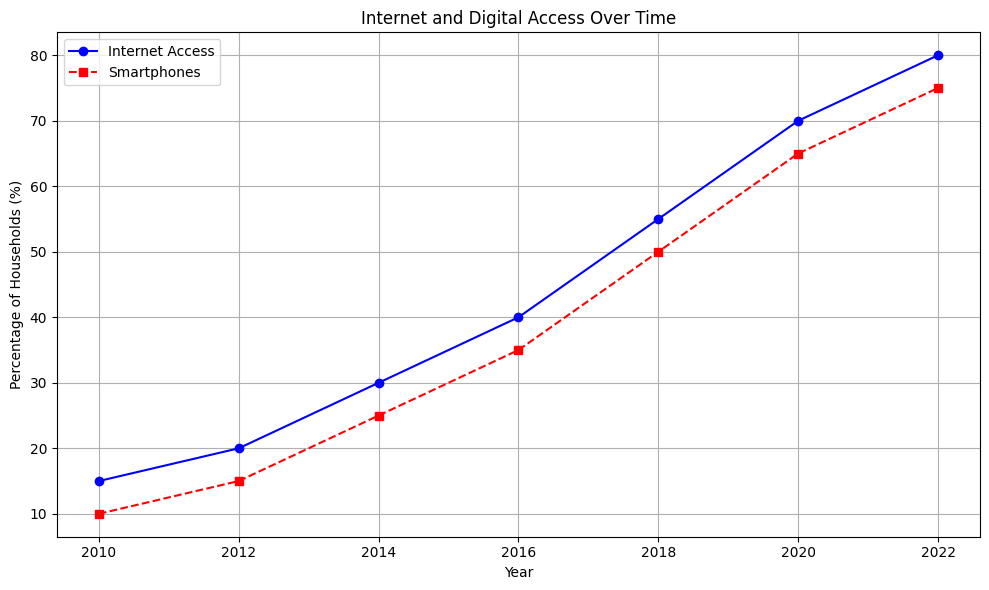Accessibility
In an increasingly digital world, access to the internet and digital devices plays a crucial role in shaping educational opportunities and outcomes. In Bangladesh, as in many developing countries, understanding the growth of internet access and smartphone penetration among households provides valuable insights into the evolving landscape of education accessibility.
Visualizing Trends Over Time
To grasp the impact of internet and digital access on education, let’s examine a line graph that illustrates the percentage of households with internet access and smartphones from 2010 to 2022:
Line Graph Analysis
The following line graph presents trends in internet access and smartphone ownership among households in Bangladesh:

- Internet Access (Blue Line): Shows a steady increase from 15% in 2010 to 80% in 2022, indicating growing connectivity across the country.
- Smartphones (Red Line): Reflects a similar upward trend, rising from 10% in 2010 to 75% in 2022, highlighting the widespread adoption of digital devices.
Insights from the Data
From the graph, several insights emerge:
- Digital Inclusion: The substantial growth in internet access and smartphone ownership signifies improved digital inclusion among households in Bangladesh, bridging the gap between urban and rural areas.
- Educational Impact: Increased access to digital resources and online learning platforms enhances educational opportunities, enabling students and educators to access information, collaborate globally, and engage in interactive learning experiences.
Implications for Education
The expansion of internet and digital access has transformative implications for education:
- Enhanced Learning: Students can access educational materials, participate in online courses, and benefit from multimedia resources that enrich learning experiences and promote digital literacy.
- Empowerment of Educators: Educators can leverage digital tools for professional development, curriculum planning, and interactive teaching methods that cater to diverse learning needs.
Future Directions
As Bangladesh continues to advance its digital infrastructure and policies, prioritizing equitable access to internet and digital devices remains paramount. Efforts to close the digital divide and ensure universal connectivity will further enhance educational outcomes and empower individuals to thrive in the digital economy.
Conclusion
The line graph illustrating trends in internet and digital access underscores the transformative impact on education accessibility in Bangladesh. By embracing digital technologies and promoting inclusive policies, stakeholders can foster a future where every learner has the tools and opportunities to succeed in an increasingly interconnected world.
As we navigate the complexities of digital transformation, investing in digital literacy, infrastructure development, and educational innovation will be key to realizing sustainable development goals and ensuring a brighter future for generations to come.